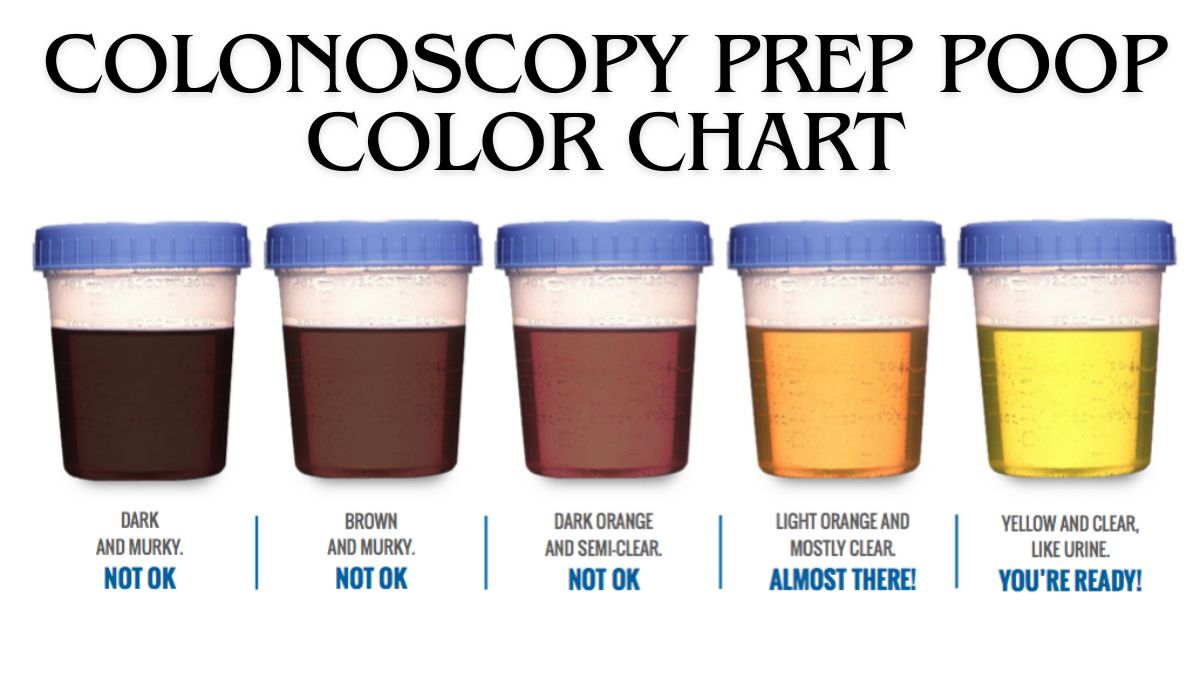Health And Fitness
Phenol Peel Before and After: Unveiling Dramatic Skin Transformations

Are you ready to unveil the secret to dramatic skin transformations? Look no further than the remarkable Phenol Peel! This powerful cosmetic procedure has been making waves in the world of skincare, promising to reveal a whole new level of radiance and rejuvenation. If you’re curious about what a Phenol Peel can do for your skin, get ready to dive into this blog post. We’ll walk you through everything from how it works and its incredible benefits, to before-and-after results that will leave you speechless. So sit back, relax, and prepare to be amazed by the transformative power of a Phenol Peel!
What is a Phenol Peel?
A Phenol Peel is a deep chemical peel that dives beneath the surface of your skin to tackle a range of skin concerns. Unlike milder peels that only target superficial layers, this potent treatment works wonders on more significant issues like wrinkles, sun damage, and even acne scars.
So how does it work its magic? The key ingredient in a Phenol Peel is phenol itself – a powerful acid that penetrates deeply into the skin. It works by breaking down old and damaged skin cells, stimulating collagen production, and promoting new cell growth. This process results in smoother texture, improved tone, and an overall youthful appearance.
One of the standout benefits of a Phenol Peel is its ability to provide long-lasting results. While other treatments may require multiple sessions or maintenance over time, just one well-executed Phenol Peel can deliver dramatic transformations that last for years!
How Does a Phenol Peel Work?
A phenol peel is an advanced cosmetic procedure that can help rejuvenate and transform your skin. But how does it actually work? Let’s delve into the science behind this powerful treatment.
Phenol peels utilize a strong chemical solution composed of phenol, croton oil, and other ingredients to deeply exfoliate the skin. This potent combination works by removing damaged outer layers of skin, stimulating collagen production, and promoting new cell growth.
During the procedure, the phenol solution is carefully applied to the face or specific target areas using a controlled technique. The solution penetrates deep into the skin, reaching the dermis where it induces controlled injury. This triggers a healing response in which fresh, healthy skin replaces old and damaged tissue.
As the treated area heals, you’ll notice significant improvements in various skin concerns such as wrinkles, fine lines, sun damage spots, acne scars, and uneven pigmentation. The results are truly remarkable!
Keep in mind that due to its intense nature, phenol peels are typically reserved for more severe cases of aging or scarring. It’s important to consult with a qualified dermatologist or plastic surgeon to determine if you’re a suitable candidate for this procedure.
In conclusion, a phenol peel works by deeply exfoliating damaged layers of skin and stimulating collagen production for dramatic rejuvenation results. Always consult with a professional before undergoing any cosmetic procedure
The Benefits of a Phenol Peel
Are you looking for a solution to rejuvenate your skin and achieve a more youthful appearance? Look no further than the phenol peel! This powerful cosmetic procedure offers numerous benefits that can truly transform your skin.
One major benefit of a phenol peel is its ability to effectively reduce the appearance of deep wrinkles and fine lines. The strong chemical solution used in this peel penetrates deep into the skin, stimulating collagen production and promoting cell turnover. As a result, those pesky signs of aging are visibly diminished, leaving you with smoother, firmer skin.
Another advantage of opting for a phenol peel is its effectiveness in treating sun damage and hyperpigmentation. Over time, exposure to harmful UV rays can lead to dark spots and uneven skin tone. By removing damaged outer layers of skin through the peeling process, a phenol peel can reveal fresher, more even-toned complexion beneath.
It’s important to note that while there are many benefits associated with this procedure; it does come with some risks and side effects as well. Therefore it’s crucial to consult with an experienced dermatologist or plastic surgeon before deciding if this treatment is right for you.
In conclusion; if you’re seeking significant transformation in your skin’s texture and tone – from reducing wrinkles and sun damage to diminishing acne scars – then considering getting a phenol peel could be worth exploring further! So why wait? Take charge today towards achieving vibrant and youthful-looking skin!
Before the Procedure: Preparing for a Phenol Peel
Before undergoing a phenol peel, it’s important to properly prepare yourself for the procedure. This will help ensure optimal results and minimize any potential risks or complications.
It is essential to consult with a qualified dermatologist or plastic surgeon who specializes in phenol peels. They will assess your skin type and condition, discuss your goals and expectations, and determine if you are a suitable candidate for the procedure.
In preparation for the peel, your doctor may recommend certain skincare products or treatments to enhance the effectiveness of the procedure. These may include topical retinoids or exfoliating agents to remove dead skin cells and promote cell turnover.
It is crucial to disclose any medical conditions, allergies, or medications you are taking during your consultation. Your doctor will provide specific instructions on which medications should be discontinued prior to the procedure as they may interfere with healing or increase bleeding risk.
To optimize outcomes and reduce potential complications such as infection or excessive scarring, it’s vital that you follow all pre-procedure instructions given by your healthcare provider diligently. These can include avoiding sun exposure before treatment and stopping smoking if applicable.
Make sure you have a clear understanding of what to expect during recovery after the phenol peel. Arrange for someone to drive you home after the procedure as there might be some discomfort or swelling initially.
By preparing adequately beforehand and following these guidelines closely, you’ll position yourself for a successful phenol peel experience. Remember that each individual is unique; therefore personalized recommendations from an experienced professional are invaluable in ensuring optimal results!
During the Procedure: What to Expect
When it comes to undergoing a phenol peel, knowing what to expect during the procedure can help ease any anxiety you may have. The actual process typically takes about one to two hours, depending on the size of the treatment area.
Before starting the procedure, your doctor will clean your face and apply a local anesthetic or sedative to numb the area. This helps minimize any discomfort you may experience during the treatment.
Next, your doctor will carefully apply the phenol solution to your skin using a predetermined technique. This solution works by penetrating deep into your skin layers and removing damaged cells, revealing fresh and rejuvenated skin underneath.
While some patients report feeling a tingling sensation or mild stinging during this stage, many find it tolerable. Your doctor may also use cool compresses or fans to keep you comfortable throughout the process.
Once all areas have been treated with phenol solution, your doctor will neutralize it using water or another specified substance. They will then apply ointment or dressings over treated areas for protection as they heal.
It’s important to note that everyone’s experience during a phenol peel can vary based on factors such as pain tolerance and individual healing abilities. It’s crucial that you follow post-procedure care instructions provided by your doctor for optimal results and recovery.
Remember, each person is unique in their response to treatments like these. Always consult with a qualified professional who can assess your specific needs and guide you through what you should expect during a phenol peel procedure.
After the Procedure: Proper Care and Recovery
Once you’ve undergone a phenol peel, it’s crucial to give your skin the proper care and attention it needs during the recovery process. This will ensure optimal healing and help maintain the results of your treatment.
Immediately after the procedure, your skin may feel tight, sensitive, and swollen. The treated area will be covered with a protective ointment or dressing to aid in healing. It’s important not to touch or pick at any scabs that form as this can lead to infection or scarring.
During the first few days following the procedure, you’ll need to keep your face clean by gently washing with a mild cleanser recommended by your dermatologist. Avoid using harsh products or scrubbing vigorously as this can irritate your delicate skin.
To minimize discomfort and reduce swelling, applying cold compresses intermittently can be helpful. Your doctor may also prescribe pain medication if necessary.
As your new skin begins to emerge, it’s essential to protect it from harmful sun exposure. Apply a broad-spectrum sunscreen with an SPF of 30 or higher every day and reapply regularly when outdoors.
Your dermatologist will provide specific instructions for post-procedure skincare based on individual factors such as desired outcomes and personal medical history. Following these guidelines diligently is crucial for successful recovery.
Remember that everyone heals differently, so don’t be alarmed if you experience redness or peeling in the weeks following treatment. These are common side effects that should subside over time.
By taking proper care of your skin after a phenol peel, you can expect smoother texture, improved tone, reduced wrinkles, and an overall rejuvenated appearance – all while maintaining long-lasting results!
Phenol Peel Before and After Results: Real Life Transformations
Phenol peel before and after results are truly remarkable, showcasing the incredible transformation that this skin rejuvenation procedure can achieve. From reducing wrinkles and fine lines to improving skin tone and texture, phenol peels have the power to turn back the clock on aging.
One of the most striking aspects of phenol peel before and after photos is how they reveal a significant improvement in overall skin appearance. The deep exfoliation provided by a phenol peel stimulates collagen production, resulting in firmer, smoother skin with diminished signs of sun damage and pigmentation issues.
In these real-life transformations, you can see how patients’ complexion becomes more radiant and youthful-looking post-procedure. Fine lines around the eyes and mouth are visibly reduced, while deeper wrinkles appear less pronounced or even disappear completely.
Moreover, phenol peels also effectively address acne scars, leaving behind clearer skin with improved texture. These dramatic improvements show just how transformative a phenol peel can be for those struggling with acne scarring.
It’s essential to note that individual results may vary based on factors such as age, skin type, and treatment plan tailored specifically for each patient. Therefore consulting with a qualified dermatologist or plastic surgeon is crucial to understand realistic expectations from a phenol peel procedure.
It’s clear from these before-and-after images that phenol peels offer impressive outcomes for individuals seeking dramatic rejuvenation without resorting to invasive surgeries or treatments.
Risks and Side Effects to Consider
Like any medical procedure, a phenol peel comes with some risks and potential side effects. It’s important to be aware of these before deciding if this treatment is right for you.
One potential risk is the possibility of an allergic reaction to the chemicals used in the peel. This can vary from mild redness and itching to more severe symptoms such as difficulty breathing or swelling. It’s crucial to disclose any known allergies or sensitivities to your dermatologist beforehand.
Another common side effect is temporary skin discoloration. The treated area may appear darker or lighter than usual for a period of time following the procedure. While this usually resolves on its own, it’s important to follow post-care instructions provided by your doctor.
In rare cases, complications such as infection or scarring may occur. These risks can often be minimized by choosing an experienced and qualified dermatologist who follows proper sterilization protocols.
It’s essential that you have a thorough consultation with your dermatologist prior to undergoing a phenol peel in order to fully understand the potential risks and side effects specific to your situation. Your doctor will assess your overall health and determine if this treatment is appropriate for you.
Remember, every individual’s experience will differ based on their unique circumstances. Be sure to discuss any concerns or questions you have with your doctor before making your final decision about proceeding with a phenol peel treatment.
Is a Phenol Peel Right for You?
Choosing to undergo any cosmetic procedure is a personal decision that should be based on your individual needs and goals. When it comes to considering a phenol peel, there are several factors to take into account.
It’s important to understand that a phenol peel is an intense treatment that can deliver dramatic results. If you have concerns such as deep wrinkles, severe sun damage, or significant skin discoloration, a phenol peel may be worth considering.
Another aspect to consider is the recovery process. After undergoing a phenol peel, you will need to follow specific aftercare instructions provided by your doctor. This typically includes avoiding sun exposure and adhering to proper skincare routines during the healing period.
Understanding the potential risks and side effects of the procedure is essential. While rare complications can occur with any medical intervention, discussing these possibilities with your doctor will help you make an informed decision about whether or not a phenol peel is right for you.
Only you can decide if pursuing this intensive treatment aligns with your desired outcomes and comfort level. So take the time to weigh all aspects before making your final decision.
Conclusion
In today’s blog post, we delved into the world of phenol peels and explored the incredible transformations they can bring to your skin. We discussed what a phenol peel is and how it works to rejuvenate your complexion. From there, we highlighted the numerous benefits of opting for this powerful treatment.
We also provided valuable insights on how to prepare for a phenol peel, what to expect during the procedure, and shared tips on proper care and recovery afterwards. Additionally, we showcased real-life before and after results that demonstrate just how dramatic these transformations can be.
Of course, no medical procedure comes without risks or potential side effects. We made sure to outline some important considerations in that regard as well.
Whether or not a phenol peel is right for you depends on various factors such as your skin type, concerns, and overall health. It’s always best to consult with a qualified dermatologist who can assess your individual needs and guide you towards the most suitable treatment options.
Remember that this blog post merely scratches the surface of what phenol peels have to offer. If you’re interested in exploring this remarkable skincare technique further, reach out to a trusted professional who can provide personalized guidance based on your unique circumstances.
Stay tuned for more informative content about skincare treatments and beauty innovations!
FAQs
How long does it take to see results after a phenol peel?
The results of a phenol peel can vary depending on the individual and the specific concerns being addressed. However, most people start to notice dramatic improvements in their skin within one to two weeks after the procedure. Over time, as the skin continues to heal and regenerate, these improvements become even more pronounced.
Are there any alternatives to a phenol peel for skin rejuvenation?
Yes, there are other options available for skin rejuvenation. Some popular alternatives include chemical peels with lighter acids such as glycolic acid or salicylic acid, microdermabrasion, laser resurfacing treatments, and dermal fillers. It is important to consult with a qualified dermatologist or plastic surgeon who can assess your unique needs and recommend the most suitable treatment option for you.
Will I experience pain during a phenol peel procedure?
During a phenol peel procedure, anesthesia will be used to numb your face and minimize any discomfort or pain. However, it is common for patients to experience some mild stinging or burning sensations during the procedure itself and in the immediate aftermath. Your doctor will provide appropriate post-procedure care instructions along with prescribed medications if needed.
How long is the recovery period following a phenol peel?
The recovery period following a phenol peel typically lasts around two weeks before you can resume normal activities without significant redness or swelling on your face. However, it’s important to note that everyone’s healing process may differ slightly based on factors such as individual skin type and depth of treatment.
Can anyone get a phenol peel?
Phenol peels are generally not recommended for individuals with darker skin tones due to an increased risk of pigment changes or scarring post-treatment.
The best way to determine if you are an ideal candidate for this type of deep chemical peel is by consulting with a qualified dermatologist or plastic surgeon. They will assess your skin condition,
Health And Fitness
Travel Nurse John Mugo Shares Tips for Managing Stress on the Job

Welcome to the world of travel nursing, where adventure meets healthcare! Being a travel nurse is not just about exploring new places and meeting different people; it also comes with its fair share of challenges and demands. One key aspect that every travel nurse must prioritize is managing stress effectively to maintain both physical and mental well-being. In this blog post, we will delve into the importance of stress management for travel nurses and explore some valuable tips shared by seasoned traveler John Mugo on how to navigate the high-pressure environments often faced in this rewarding yet demanding profession. So buckle up, fellow wanderers in scrubs, as we embark on a journey towards better stress management in the world of travel nursing!
Travel Nurse John Mugo : The Demands and Challenges of the Job
Travel nursing is a unique career choice that comes with its own set of demands and challenges. From constantly adapting to new work environments to navigating different hospital protocols, travel nurses must be flexible and quick on their feet. The nature of the job requires them to build rapport with patients quickly while also ensuring they provide high-quality care.
Additionally, travel nurses often face long hours and irregular shifts, which can take a toll on their physical and mental well-being. Balancing work commitments with personal life can be challenging when constantly on the move from one assignment to the next. Furthermore, being away from friends and family for extended periods can lead to feelings of isolation and loneliness.
Despite these obstacles, many travel nurses find fulfillment in their roles by embracing the adventure and growth opportunities that come with traveling for work. They develop resilience and adaptability skills that serve them well not only in their careers but also in life overall.
Travel Nurse John Mugo : Importance of Managing Stress as a Travel Nurse
As a travel nurse, the importance of managing stress cannot be overstated. The nature of this job can bring about unique challenges and demands that may impact your overall well-being. Stress management is crucial not only for your mental health but also for providing quality care to patients in different healthcare settings.
Constantly moving from one assignment to another can take a toll on you physically and emotionally. It’s vital to find healthy ways to cope with the pressures that come with being a travel nurse. By prioritizing stress management, you can prevent burnout and maintain a sense of balance in your professional and personal life.
Effective stress management techniques can vary from person to person. Whether it’s finding time for self-care activities, seeking support from colleagues or loved ones, or incorporating mindfulness practices into your daily routine, taking proactive steps to manage stress is key. Remember, by prioritizing your own well-being, you’ll be better equipped to handle the challenges that come with being a travel nurse.
Travel Nurse John Mugo : Tips for Managing Stress on the Job:
Finding a supportive community can make all the difference when it comes to managing stress as a travel nurse. Connecting with fellow healthcare professionals who understand the unique challenges you face can provide a sense of camaraderie and support that is invaluable in high-pressure situations.
Practicing self-care and self-awareness is essential for maintaining mental well-being while on assignment. Taking time for yourself, whether it’s through meditation, journaling, or simply taking a walk outside, can help you recharge and refocus amidst the demands of your job.
Utilizing coping mechanisms such as exercise and mindfulness techniques can also be effective in reducing stress levels. Engaging in physical activity releases endorphins that boost mood, while mindfulness practices like deep breathing can help calm an overwhelmed mind.
Remember, prioritizing your mental health is not selfish—it’s necessary for providing quality care to your patients. By implementing these tips into your routine, you’ll be better equipped to handle the challenges that come with being a travel nurse.
– Finding a supportive community
One of the most valuable assets for travel nurses is finding a supportive community. Being on the road can feel isolating at times, but having a network of fellow healthcare professionals can make all the difference. Whether it’s connecting with other travel nurses at your current assignment or joining online forums and social media groups, having people who understand the unique challenges you face can provide much-needed support.
Sharing experiences, advice, and even just venting frustrations with others who “get it” can be incredibly cathartic. It reminds you that you’re not alone in this demanding profession. Plus, building relationships within your field can open up opportunities for collaboration and learning from each other’s expertise.
So, don’t underestimate the power of camaraderie in navigating the ups and downs of travel nursing. Reach out, connect, and cultivate those relationships that will help sustain you through challenging times on the job.
– Practicing self-care and self-awareness
Taking care of yourself is a crucial aspect of managing stress as a travel nurse. It’s essential to prioritize self-care and cultivate self-awareness in order to maintain your well-being amidst the demands of the job.
Self-care can take many forms, whether it’s setting aside time for relaxation, engaging in activities you enjoy, or simply taking a moment to breathe and center yourself. By tuning into your own needs and emotions, you can better address any signs of burnout or overwhelm before they escalate.
Practicing self-awareness involves being in tune with your thoughts, feelings, and physical sensations. This awareness allows you to recognize when stress is building up and take proactive steps to address it. Whether it’s through mindfulness practices like meditation or journaling, finding what works best for you is key.
Remember that prioritizing self-care isn’t selfish—it’s necessary for maintaining your mental and emotional well-being in a high-pressure environment like travel nursing. So don’t forget to carve out time for yourself amidst caring for others!
– Utilizing coping mechanisms such as exercise and mindfulness
In the fast-paced world of travel nursing, stress can easily creep up on you. That’s why it’s essential to have coping mechanisms in place to help you navigate the challenges that come your way. One effective strategy is turning to exercise as a way to release tension and boost endorphins. Whether it’s hitting the gym for a workout or going for a run outside, physical activity can work wonders for your mental well-being.
Mindfulness is another powerful tool that can help you stay grounded amidst the chaos of being on the road. Taking time to practice mindfulness techniques such as deep breathing or meditation can provide much-needed moments of calm and clarity in your day. By incorporating these practices into your routine, you’ll be better equipped to handle whatever comes your way during your travel nursing assignments.
Remember, prioritizing self-care is not selfish—it’s necessary for maintaining a healthy mind and body while juggling the demands of being a travel nurse. So next time you feel overwhelmed, take a moment to breathe deeply and engage in some physical activity or mindfulness exercises. Your future self will thank you for it!
Personal Experience: Interview with Travel Nurse John Mugo
In a recent interview with Travel Nurse John Mugo, he shared insightful tips on managing stress while on assignment.
John emphasized the importance of finding a supportive community among fellow nurses and healthcare professionals. He highlighted how connecting with others facing similar challenges can provide a sense of camaraderie and understanding.
When it comes to self-care, John stressed the significance of taking time for oneself and being self-aware of personal needs. He mentioned incorporating activities like exercise and mindfulness into his routine to help alleviate stress.
Reflecting on his own experiences, John discussed how utilizing coping mechanisms has been essential in maintaining his mental well-being during demanding work periods. From deep breathing exercises to engaging in physical activity, he finds different strategies that work best for him.
John’s insights shed light on the realities of managing stress as a travel nurse and the positive impact that prioritizing mental health can have in high-stress environments.
Conclusion
Travel Nurse John Mugo| Travel nursing is a demanding yet rewarding career that requires resilience and dedication. Managing stress in this high-pressure environment is crucial for maintaining mental well-being. By prioritizing mental health, travel nurses can ensure they are equipped to provide the best care for their patients.
Self-care practices such as mindfulness, exercise, and seeking support from a community of like-minded individuals are essential tools in combating stress. Taking time to decompress and recharge is not a luxury but a necessity in this fast-paced profession.
Travel Nurse John Mugo emphasizes the significance of self-awareness and coping mechanisms in navigating the challenges of his job. His experience serves as an inspiration for fellow nurses to prioritize their mental health amidst the demands of travel nursing.
By recognizing the importance of managing stress and prioritizing mental health, travel nurses can sustain their passion for patient care while safeguarding their own well-being.
FAQs: Travel Nurse John Mugo
Can travel nursing be a sustainable career choice?
Absolutely! With proper stress management techniques and self-care practices in place, travel nursing can indeed be a rewarding and sustainable career option.
How can I find a supportive community as a travel nurse?
Joining online forums, attending networking events, and connecting with colleagues at your assignments are great ways to build a support system within the travel nursing community.
What are some quick self-care activities I can do during short breaks on the job?
Taking deep breaths, stretching, going for a short walk, or listening to calming music are all simple yet effective ways to practice self-care during hectic shifts.
Is mindfulness really helpful in managing stress as a travel nurse?
Yes, mindfulness techniques such as meditation and deep breathing exercises have been proven to reduce stress levels and increase mental clarity, making them valuable tools for travel nurses.
How can I ensure that my mental health remains a priority while working in high-stress environments?
By setting boundaries, seeking professional help when needed, prioritizing self-care routines, and staying connected with loved ones outside of work hours, you can take proactive steps to safeguard your mental well-being in demanding roles like travel nursing.
Health And Fitness
Understanding Your Colonoscopy Prep Poop Color Chart: A Comprehensive Guide

Are you gearing up for a colonoscopy and feeling a bit overwhelmed by the prep process? Fear not, as we delve into the colorful world of poop – yes, you read that right! Understanding your colonoscopy prep poop color chart is key to ensuring a successful procedure. So, grab a seat (pun intended) and let’s explore everything you need to know about this essential aspect of your upcoming colonoscopy journey.
What is a Colonoscopy and Why is it Important?
A colonoscopy is a medical procedure that allows doctors to examine the lining of your large intestine (colon) using a flexible tube with a camera attached. It is an essential tool for detecting and preventing various gastrointestinal issues, including colorectal cancer, polyps, and inflammation.
The importance of a colonoscopy lies in its ability to catch potential problems early on when they are most treatable. By identifying abnormalities in the colon, such as precancerous polyps, doctors can remove them before they develop into something more serious.
While the idea of a colonoscopy may seem daunting, it is a crucial step in maintaining your digestive health and overall well-being. Remember, early detection is key when it comes to preventing serious conditions like colorectal cancer. So, embrace the process knowing that you are taking proactive steps towards safeguarding your health.
The Colonoscopy Prep Process
Preparing for a colonoscopy may sound daunting, but it is crucial for maintaining your digestive health. The prep process typically involves cleaning out your colon to ensure the doctor can get clear and accurate results during the procedure.
Your healthcare provider will provide you with detailed instructions on how to prepare for your colonoscopy. This usually includes dietary restrictions and drinking a specific solution to help flush out your system.
It is essential to follow these instructions carefully to ensure that your colon is clean and ready for examination. Skipping or not following the prep process properly may result in an incomplete procedure or inaccurate results.
While the prep process may be uncomfortable, remember that it is temporary and plays a vital role in detecting any potential issues early on. Stay focused on the end goal of taking care of your health throughout this preparation phase.
Understanding the Poop Color Chart
Understanding the Poop Color Chart is a crucial part of preparing for your colonoscopy. It may not be the most glamorous topic, but it plays a significant role in ensuring a successful procedure. The color and consistency of your stool can provide valuable insights into your digestive health.
The chart typically includes colors ranging from yellow to brown to green, each indicating different aspects of your bowel movements. While it may seem strange to focus on poop colors, paying attention to these details can help healthcare providers assess your gastrointestinal tract’s condition.
By familiarizing yourself with the poop color chart and understanding what each color signifies, you can actively participate in monitoring your digestive system’s health. Remember that deviations from the norm should not be ignored and may warrant further investigation by medical professionals.
So, embrace the poop color chart as a tool for maintaining good gut health and ensuring a successful colonoscopy prep process.
Common Colors and What They Indicate
When it comes to the color of your poop during colonoscopy prep, there can be a range of shades that may appear. Let’s dive into some common colors and what they could indicate.
If your stool is yellow, it might suggest that bile isn’t properly breaking down fats in your digestive system. Green poop could signal rapid transit through your intestines or an abundance of leafy greens in your diet.
On the other hand, black stools could be due to blood from higher up in the gastrointestinal tract. Red or maroon-colored poop may also indicate bleeding but from lower down in the digestive tract.
White or clay-colored stools might point towards issues with bile flow, potentially linked to liver problems.
It’s essential to pay attention to these variations as they can offer insights into your digestive health during the preparation process for a successful colonoscopy.
Tips for a Successful Prep
Preparing for a colonoscopy can be daunting, but with the right approach, it can go smoothly. Here are some tips for a successful prep.
Stay hydrated by drinking clear liquids like water, broth, and sports drinks. Dehydration can make the process more challenging.
Follow your doctor’s instructions carefully to ensure you complete the prep correctly. Skipping steps or taking incorrect medications can affect the quality of your colonoscopy.
Stock up on supplies like wet wipes, moisturizer, and reading material to keep yourself comfortable during the prep process.
Plan ahead by scheduling time off work and arranging for transportation to and from the procedure. Give yourself time to rest and relax before and after the colonoscopy.
Stay positive and focused on the importance of this screening procedure for your health. Remember that proper preparation leads to accurate results.
How to Prepare Mentally and Emotionally
Preparing for a colonoscopy goes beyond just physical readiness; it also involves mental and emotional preparation. The thought of the procedure can be daunting, but staying informed and focused can help alleviate anxiety.
One way to prepare mentally is to educate yourself about the process. Understanding why the colonoscopy is necessary and what to expect during the prep and procedure can ease worries.
Emotionally, it’s essential to practice self-care leading up to the appointment. Engage in activities that bring you comfort and relaxation, whether it’s reading a book, meditating, or spending time with loved ones.
Additionally, reaching out to friends or family for support can provide emotional reassurance during this time. Talking about your concerns and fears openly can help alleviate any pent-up emotions.
Remember that feeling nervous or anxious is normal before a medical procedure. Acknowledge your feelings and take steps to address them positively for a smoother experience overall.
Conclusion
Ensuring a successful colonoscopy involves more than just showing up for the procedure. Following the poop color chart during your prep is crucial in providing accurate results and ensuring a thorough examination of your colon. By paying attention to the colors of your stool, you are helping healthcare professionals identify any abnormalities or issues that may be present.
The different shades and textures of feces can provide valuable insights into your digestive health, making it easier for doctors to detect any potential concerns. While it may not be the most glamorous part of the process, adhering to the poop color chart guidelines can significantly impact the effectiveness of your colonoscopy.
Remember, this simple act of monitoring and noting your stool colors plays a vital role in maintaining good gut health and overall well-being. So next time you’re prepping for a colonoscopy, keep an eye on those colors – they might just hold the key to a successful procedure.
FAQs
How long does the colonoscopy prep process take?
The duration of the colonoscopy preparation can vary, but typically it takes around 1-2 days to complete the entire process.
Can I drink alcohol during my colonoscopy prep?
It is essential to avoid alcohol during your colonoscopy prep as it can interfere with the effectiveness of the procedure.
Will I be able to work or go about my daily activities during the prep process?
It is recommended to clear your schedule and focus on following the guidelines provided by your healthcare provider for a successful prep.
What should I do if I experience severe discomfort or pain during the prep process?
If you are experiencing significant discomfort or pain while following the prep instructions, contact your healthcare provider immediately for guidance and support.
How often should I undergo a colonoscopy screening?
The frequency of colonoscopies depends on factors such as age, family history, and personal health conditions. It is best to consult with your healthcare provider to determine an appropriate screening schedule tailored to your individual needs.
Health And Fitness
Wave_of_happy_: Embracing Positivity and Spreading Joy in Your Everyday Life

Wave_of_happy_! Welcome to a world where positivity reigns supreme, and joy is the currency of choice. In a society often overshadowed by negativity, embracing a wave of happy can be a game-changer in transforming your everyday life. Join us on this journey as we explore the power of positive thinking, spreading joy, and making the world a brighter place one smile at a time.
Wave_of_happy_: The Benefits of Positive Thinking and Spreading Joy
Positive thinking and spreading joy can have a profound impact on our overall well-being. When we choose to focus on the good in every situation, it shifts our perspective and helps us navigate challenges with resilience. Positivity not only uplifts our mood but also enhances our mental clarity and decision-making abilities.
By radiating positivity, we create a ripple effect that influences those around us. Small gestures of kindness can brighten someone’s day and foster a sense of connection. When we choose to spread joy, we contribute to a more harmonious environment where compassion thrives.
Embracing positivity doesn’t mean ignoring difficulties; rather, it equips us with the strength to face adversities head-on. It allows us to approach problems with a solution-oriented mindset, leading to better outcomes and personal growth.
Incorporating positive thinking into our daily lives is like planting seeds of happiness that bloom into beautiful moments shared with others. Let’s embrace the power of optimism and make the world a brighter place for everyone!
Wave_of_happy_: Small Ways to Incorporate Positivity into your Daily Routine
Incorporating positivity into your daily routine doesn’t have to be a daunting task. It can be as simple as starting your day with a grateful heart. Take a few moments in the morning to reflect on things you’re thankful for, setting the tone for a positive day ahead.
Another small way to infuse positivity is by practicing mindfulness. Take short breaks throughout the day to focus on your breath and bring yourself back to the present moment. This can help reduce stress and increase your overall sense of well-being.
Engaging in acts of kindness towards others is also a powerful way to spread positivity. Whether it’s complimenting a coworker or holding the door open for someone, these small gestures can make a big difference in someone else’s day.
Surrounding yourself with uplifting content such as inspirational quotes or music that lifts your spirits can also help maintain a positive mindset throughout the day. Remember, even the smallest actions can create ripple effects of positivity in your life and those around you.
Wave_of_happy_: The Power of Gratitude and How it Contributes to a Life
Gratitude is like a magic wand that has the power to transform our perspective on life. When we take the time to appreciate the little things, we open ourselves up to a world of positivity and abundance. It’s about acknowledging the good in our lives, no matter how small it may seem.
Practicing gratitude shifts our focus from what we lack to what we already have, fostering a sense of contentment and fulfillment. It reminds us that even amidst challenges, there are still blessings to be grateful for. This mindset not only boosts our mood but also improves our overall well-being.
By cultivating a habit of gratitude, we train our minds to see the silver linings in every situation. It helps us cultivate resilience and optimism in the face of adversity. Gratitude is not just about saying thank you; it’s about living with awareness and appreciation for all that surrounds us.
Incorporating gratitude into your daily routine can be as simple as keeping a gratitude journal or expressing thanks to others regularly. The more we practice gratitude, the more attuned we become to the beauty and goodness in life – creating a ripple effect of positivity around us.
Wave_of_happy_: Tips for Maintaining a Positive Mindset During Difficult Times
When facing challenging times, it’s essential to prioritize self-care. Take time for activities that bring you joy and relaxation, whether it’s reading a book, going for a walk in nature, or practicing mindfulness through meditation.
Surround yourself with positivity by connecting with supportive friends and family members who uplift your spirits. Engage in open conversations about your feelings and seek comfort in knowing that you’re not alone in facing adversity.
Practice gratitude daily by keeping a journal of things you are thankful for. Focusing on the blessings in your life can shift your perspective towards a more optimistic outlook even amidst difficulties.
Set realistic goals to maintain motivation and a sense of accomplishment. Celebrate small victories along the way to boost your confidence and keep moving forward with a positive mindset.
Remember that it’s okay to seek professional help if needed. Therapy or counseling can provide valuable tools and strategies to navigate tough times while fostering resilience and emotional well-being.
Wave_of_happy_: Building a Community of Positivity Through Acts of Kindness and Compassion
Building a community of positivity through acts of kindness and compassion is like creating ripples in a pond – the effects spread far and wide. When we extend a helping hand or offer words of encouragement, we not only uplift others but also create a network of support and empathy.
Simple gestures like smiling at strangers, lending an ear to listen, or volunteering in your community can make a significant impact. These small acts collectively contribute to fostering an environment where positivity thrives and negativity fades away.
By participating in acts of kindness regularly, you not only brighten someone else’s day but also cultivate a sense of fulfillment within yourself. It’s amazing how interconnected our actions are; one kind deed can inspire another, sparking a chain reaction of goodness.
Together, we have the power to shift mindsets from pessimism to optimism by demonstrating compassion towards one another. Let’s join hands and build a community where kindness is abundant, hearts are open, and joy is contagious.
Conclusion
As we wrap up our journey of exploring the power of positivity and spreading joy (wave_of_happy_), remember that each small act of kindness contributes to a ripple effect in makin g the world a brighter place. Embracing the wave of happy is not just about personal fulfillment but also about creating a positive impact on those around you.
Choosing to approach life with optimism and gratitude (Wave_of_happy_) can transform your outlook and inspire others to do the same. By radiating positivity, you have the ability to uplift spirits, foster connections, and cultivate a community built on compassion and understanding.
So keep embracing every opportunity to spread joy, whether it’s through a smile, a kind gesture, or simply being there for someone in need. Together, let’s continue riding this wave of happiness and making our world shine a little brighter each day.
FAQs: Wave_of_happy_
How can I start incorporating positivity (Wave_of_happy_ into my daily routine?
Start by practicing gratitude, surrounding yourself with positive influences, and engaging in activities that bring you joy. Small changes can make a big difference in your overall mindset.
What are some simple ways to spread joy (Wave_of_happy_)
to others?
Simple acts of kindness like complimenting someone, sending a thoughtful message, or offering help can go a long way in brightening someone else’s day. Remember, spreading joy is contagious!
How does maintaining a positive mindset benefit me?
Positive thinking has been linked to improved mental health, better stress management, increased resilience, and even enhanced physical health. Embracing positivity can lead to a happier and more fulfilling life.
How do acts of kindness contribute to building a community of positivity?
When individuals come together to support and uplift one another through acts of kindness and compassion, they create a ripple effect that spreads throughout the community. By fostering an environment of positivity and empathy, we can make the world a better place for everyone.
Can I still maintain positivity during challenging times?
Absolutely! While it may be difficult at times, focusing on gratitude, seeking support from loved ones, practicing self-care, and staying optimistic about the future can help you navigate tough situations with grace and resilience.
-

 Business6 months ago
Business6 months agoModular Kitchen Cabinets: Revolutionizing Modern Home Design
-

 Technology8 months ago
Technology8 months agoyourmortgageonline.com login
-

 Technology8 months ago
Technology8 months agocrewsense login
-

 Finance8 months ago
Finance8 months agoTriPoint Lending Personal Loans Reviews: A Comprehensive Look
-

 Technology8 months ago
Technology8 months agoArtificial intelligence: what is it and how is it evolving?
-

 Finance8 months ago
Finance8 months agoOnline Loans Fintechzoom: Unlocking Financial Possibilities
-

 Technology7 months ago
Technology7 months ago“преводеч”: Bridging Linguistic Divides in the Digital Age
-

 Business8 months ago
Business8 months agoExploring the Success Story of Finchtechie.com Online Business Phenomenon
